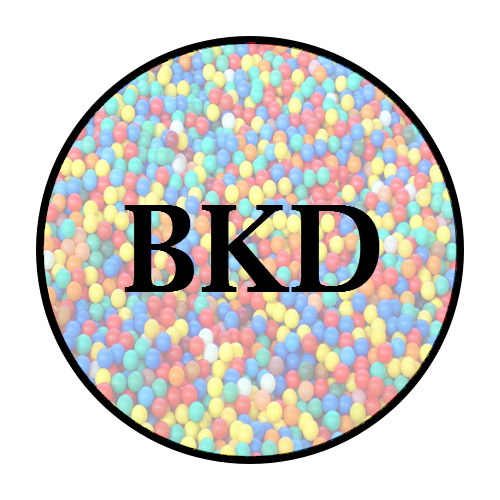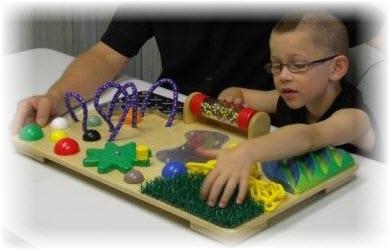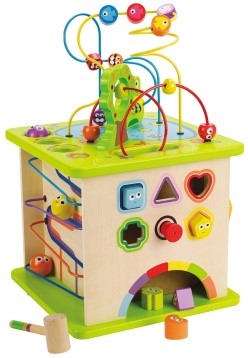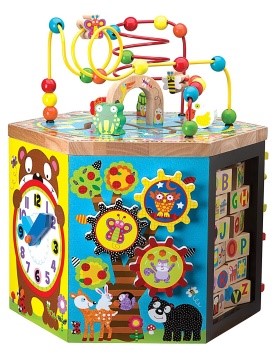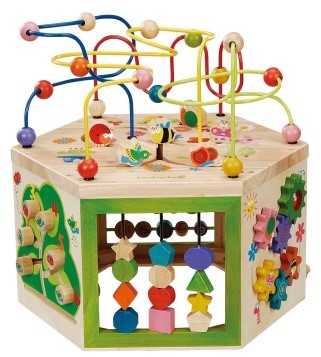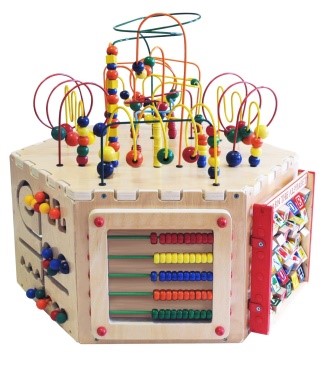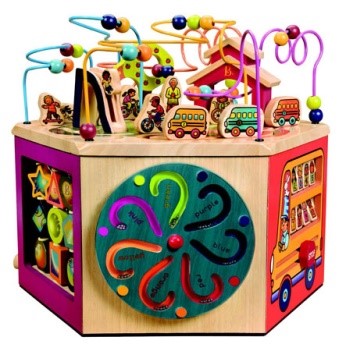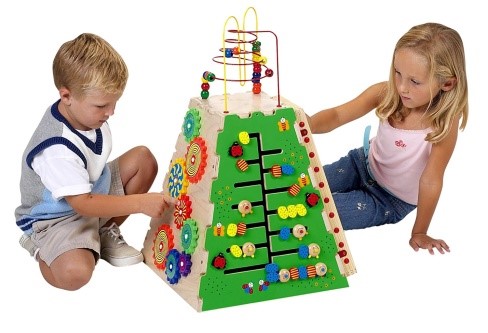SENSORY BOARDS
With growing recognition about the importance of sensory play in a child’s development these days, there are a range of products that are being produced to help stimulate the senses. Sensory boards (also called busy boards or activity boards) and Activity Cubes are two types of product that offer babies and toddlers a range of activities to engage with as they play and explore.
Sensory boards are a large piece of board that has a wide range of activities for children to explore attached to it – things they can twist, turn, push, pull, feel, make sounds with and manipulate in a variety of ways. Sensory boards are great because you can mount them on the wall or lay them flat, depending on the age of your child and the space you have available.
A sensory board allows your child unrestricted access to the items on the board. This will help them to become more independent and creates a safe space for them to explore a variety of textures, sounds and movements.
It’s currently a popular DIY activity for enthusiastic parents or grandparents to make a sensory boards and that is great, but if you’re not feeling particularly handy, you might like to try one of these:
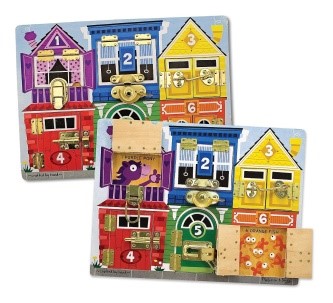 |
Melissa & Doug Deluxe Latches Sensory BoardThis board is about the size of a puzzle and focuses on providing different locks and latches to learn to undo. Underneath the doors are some cute pictures for children to discover. This board has the advantage of being portable, and something that is easy to transport to provide a sensory activity for little ones, but it does focus mostly on locks and latches. |
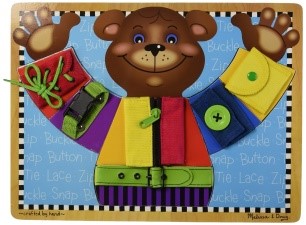 |
Melissa & Doug Deluxe Basic Skills Sensory BoardThis board is also the size of a puzzle and easy to transport, but it contains a wider range of different skills for children to practice – tying, buckling, buttoning, zips, clips and studs. Best suited for children 2-4 years rather than babies. |
|
|
Tabletop Texture Sensory BoardThis board is a classic sensory board with a wide range of textures, as well as activities that make sounds, things that can move and be manipulated in a variety of ways. |
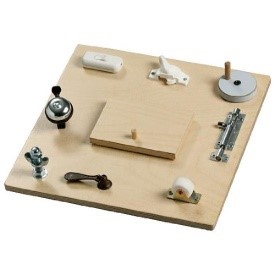 |
Pastel Wooden Toys Busy Sensory BoardThis board is reminiscent of a DIY board, with a variety of objects you might find at a hardware store – locks, latches, switches, doors, wheels, door knockers and things to twist and turn. |
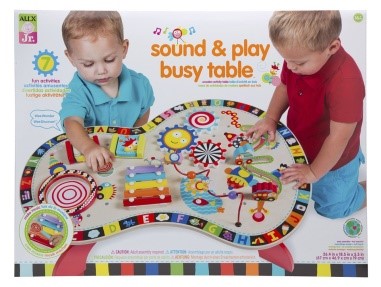 |
Alex Jr Sound & Play Busy Sensory TableThis board is well designed for babies and toddlers with a wide variety of activities including gears, things that make sounds, track and trace activities, things to flick and open and much more. |
ACTIVITY CUBES
Activity Cubes are usually a cube with a different activity on each side as well as the top. Although they’re not called sensory cubes, the activities generally stimulate a child’s senses, providing things that can be manipulated, different textures, sounds and movements. Some activity cubes are hexagonal or octagonal.
There are a wide variety of activity cubes and also activity tables that are available these days. They have become a popular choice for play rooms because they are self-contained and not messy. Instead of spending money on 6 or 7 different toys, you can buy one cube that encompasses all of these, making more room for other things and less tidying up! But with so many on the market, how do you choose the best?
Here are some things to consider when choosing an activity cube:
1. Go with wood. Wooden cubes tend to last longer than plastic and they provide a much better sensory experience for children. Plastic has a tendency to look very tatty and worn quite quickly, whereas wood still has a class feel and look to it even when well-used.
2. Avoid battery-powered. There are all sorts of activity tables you can get that have buttons to push to get music, voice or sounds. Electronic sounds do have a place in certain contexts, but for a genuine sensory experience, an activity cube should have opportunities for children to make their own sounds through banging, twisting, shaking or turning objects. A barrage of electronic and artificial sounds may actually dull a child’s ability to fully engage their senses.
3. Multi-purpose activities. Look carefully at the activities on the cube. Which ones can be played and interacted with in a variety of ways and which ones just do one thing? Choose cubes with activities that have the most variety and different ways to play with them. Activities that encourage children to solve problems or figure things out and that are not too easy are the best.
4. Room to grow. Think about whether the activity cube provides activities for a child to grow into. For example, a cube with one side that is a chalkboard may not be too useful for a baby, but toddlers and younger children will love drawing on it with chalk as they get older. By considering what activities are provided for children as they grow, you’ll get the best value from your activity cube.
Here are some examples of good activity cubes:
| Hape Country Critters Cube
|
Alex Jr Woodland Wonders
|
Everearth Garden Activity Cube
|
| Anatex 6-sided Play Cube
|
B.Toys Youniversity Play Cube
|
Anatax Play Pyramid
|
